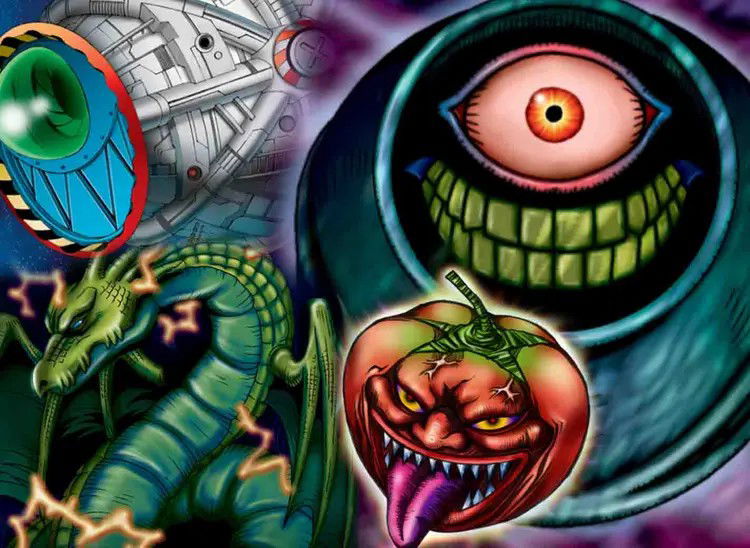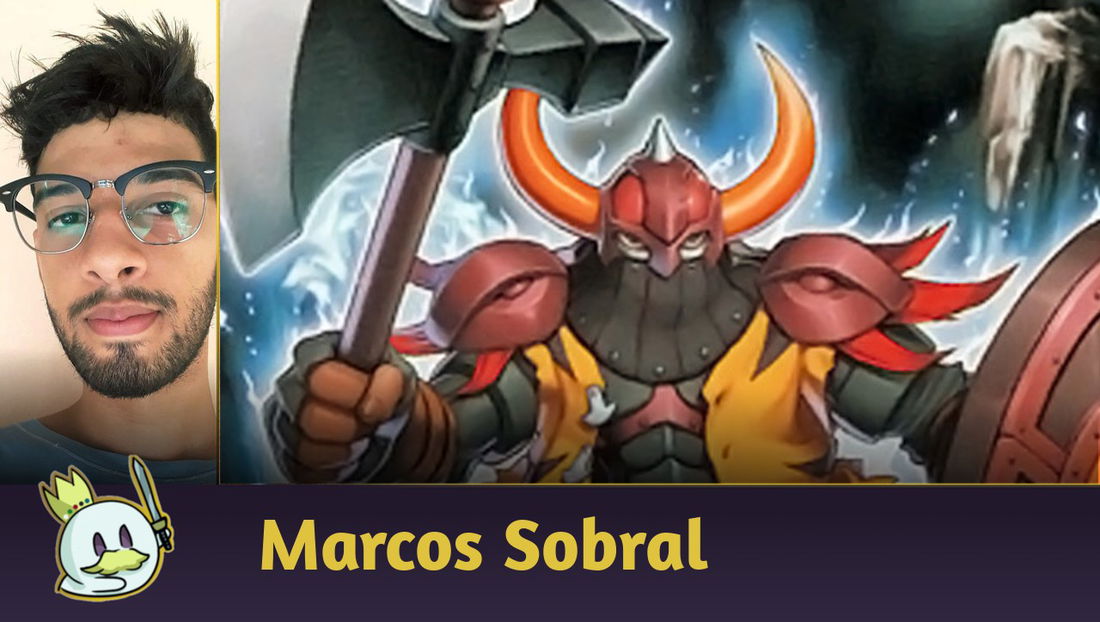Introduction - What is the GOAT Format?
The GOAT format is one of the most popular vintage Yu-Gi-Oh!TCG formats, particularly among other Time Wizard formats. It was named after Scapegoat, which was quite popular in April 2005, the period this format is set in.

As we mentioned above, this format replicates the April 2005 meta, more specifically after The Lost Millennium set came out, and just before the Cybernetic Revolution set was released. The Forbidden & Limited list at the time was, naturally, the April 2005 banlist, and the Master Rule used was MR-1.
How Does It Work
The main idea behind the GOAT format is to let players revisit one of the most iconic and technical eras in Yu-Gi-Oh!TCG history. At this time, duels were slower, centered around controlling resources, reading the game state, and controlling how the duel plays out.

The GOAT format replicates a very specific time in Yu-Gi-Oh! TCG history. It also attracts both nostalgic players and competitive players who want to play "mechanical" formats, that is, formats where ability and knowledge matter more than playing explosive combos.
April 2005 Forbidden & Limited List: the GOAT Format
The GOAT Format - Forbidden Cards
Chaos Emperor Dragon - Envoy of the End;
The GOAT Format - Limited Cards
Black Luster Soldier - Envoy of the Beginning;
Left Arm of the Forbidden One;
Left Leg of the Forbidden One;
Right Arm of the Forbidden One;
Right Leg of the Forbidden One;
The GOAT Format - Semi-Limited Cards
Dark Scorpion - Chick the Yellow;
Decks to Play the GOAT Format
Zombie
This Zombie list will keep your board full at all times and put pressure on the opponent gradually, more specifically with monsters like Pyramid Turtle and Spirit Reaper. One of this strategy's greatest strengths is how it reuses resources from the graveyard, but it also discards cards and controls the opponent quite heavily, so it's quite annoying.
Panda Burn
Panda Burn's main goal is preventing the opponent from attacking with cards like Level Limit - Area B and Gravity Bind. Meanwhile, it will deal damage to the opponent's LP with its countless burn cards. The main star in this list is Gyaku-Gire Panda, which can easily become a finisher because it buffs its own ATK and deals extra damage to the opponent's LP.
Chaos Turbo
Chaos Turbo is one of the most consistent and powerful decks in the GOAT format. Its strategy centers around speeding up the game plan with card draw and Thunder Dragon. That's how you'll easily access Black Luster Soldier - Envoy of the Beginning and Chaos Sorcerer. Its main advantage is how versatile it is, and the fact it also plays defensive cards like Book of Moon and Sakuretsu Armor.
Chaos Control
Chaos Control is a "slower" version of Chaos strategies. This deck uses Metamorphosis to turn "Scapegoat Tokens" into monsters like Thousand-Eyes Restrict, and also uses the Chaos engine, namely Black luster Soldier - Envoy of the Beginning and Chaos Sorcerer. Furthermore, this deck also uses cards like Tsukuyomi and Magician of Faith to recycle powerful Spells.
Another great thing about Chaos Control is that it can heavily disrupt the opponent's game plan, all while it also creates small advantages for itself. It is perfect if you are more patient and technical, and if you know how to manage your resources well.
GOAT Control
GOAT Control is the most iconic deck in the format - it's what it was named after. In fact, this name was inspired by the synergy between Scapegoat and Metamorphosis, which both give you access to Thousand-Eyes Restrict very easily. The main strategy is simplifying the game so you can win in the grind game, and that means you'll need to know the format and how to read the game state really well. Small decisions could make all the difference in the world. This deck definitely benefits great players because, to master it, you'll need to be ready for long duels that are decided by tiny details.
GOAT Control is very similar to Chaos Control, but it is also different because it focuses more on the grind game instead of on controlling resources.
Final Words
What do you think about the GOAT format? Tell us all your thoughts in our comment section below.
To learn more about the Yu-Gi-Oh!TCG universe, keep browsing our articles. Cards Realm thanks you for your support!
See you next time!













— Kommentare 0
, Reaktionen 1
Sei der erste der kommentiert